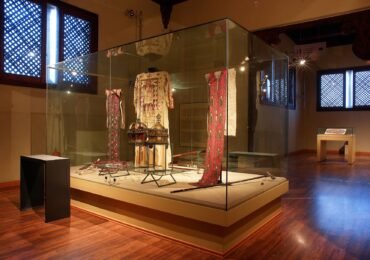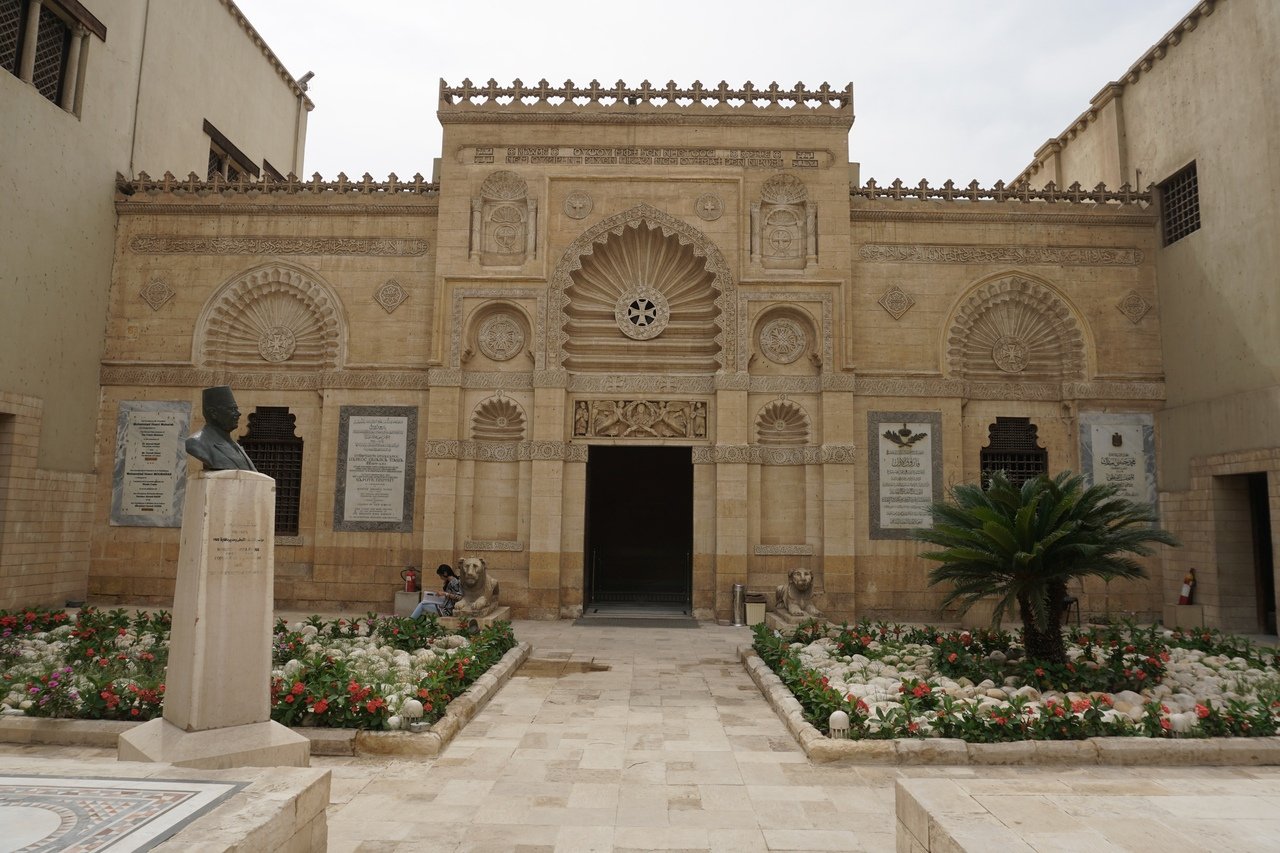The Coptic Museum in Cairo is a little known treasure that boasts a rich tapestry of history and art. Nestled in the heart of Old Cairo, it houses the world’s largest collection of Coptic Christian artifacts, making it a must-see destination for anyone interested in the history of Christianity, art, and Egyptian culture. This cultural repository not only preserves the narrative of a religious community that has played an important role in shaping Egypt’s history but also reflects the various influences that have molded Coptic art and tradition down through the centuries. Herein, we shall explore the treasures of the Coptic Museum, pointing out the fascinating exhibits and their story regarding the history of Coptic Christianity.
A Brief History of the Coptic Museum
The Coptic Museum was founded in 1908 by Marcus Simaika Pasha, a dedicated Egyptian historian and Coptic figure. His mission was to preserve the rich cultural heritage of the Coptic community. Which dates back to the early centuries of Christianity. Simaika Pasha’s vision was to create a space where the unique history of the Copts could be celebrated and studied. Providing a testament to their enduring legacy in Egypt. His efforts were instrumental in collecting, cataloging, and preserving artifacts that might have otherwise been lost to time.
The museum’s location in Old Cairo is significant. It is close to some of the oldest Christian sites in the city, including the Hanging Church and the Church of St. Sergius and Bacchus. This proximity offers visitors an immersive experience. As they can explore the historical context of the area while visiting these ancient churches that are still active places of worship. The museum’s architecture itself is a blend of traditional Coptic styles with modern influences. Creating a serene environment that invites contemplation and exploration of the rich tapestry of Coptic history.
Coptic Art and History
Coptic art is a unique blend of Egyptian, Greek, Roman, and Byzantine influences. Reflecting the diverse cultures that have shaped Egypt’s history. This fusion is evident in the museum’s extensive collection, which spans from the 3rd to the 19th century. Showcasing a wide array of artifacts that provide insight into the Coptic community’s artistic and religious life. The art pieces demonstrate the adaptability and resilience of the Copts as they absorbed and reinterpreted various cultural influences to create their distinctive style.
The Influence of Early Christianity
Coptic Christianity is one of the earliest Christian communities in the world. With roots tracing back to the Apostle Mark, who is believed to have brought Christianity to Egypt in the first century AD. This early introduction of Christianity to Egypt led to the development of a unique religious identity that blended with the local customs and traditions. The Coptic Museum’s exhibits demonstrate how early Christians adapted their faith to the local culture. Resulting in a distinctive form of Christian art and architecture. The artifacts on display illustrate the evolution of Coptic religious practices and their adaptation to changing political and social landscapes.
The museum provides an insightful narrative of how Coptic Christianity evolved through periods of persecution and prosperity, showcasing the resilience and faith of its followers. Visitors can explore how the early Copts developed unique liturgical practices and art forms that set them apart from other Christian communities. Reflecting their deep connection to both their faith and their Egyptian heritage.
Iconography and Religious Art
One of the highlights of the Coptic Museum is its collection of religious icons. These icons, which date from the 5th century onwards, are notable for their vibrant colors and intricate details. Many of them depict scenes from the Bible or portraits of saints. Offering a glimpse into the spiritual life of the Coptic community. The icons are not merely artistic expressions. But also serve as important religious symbols that played a vital role in Coptic worship and devotion.
The detailed craftsmanship of these icons reveals much about the artistic techniques and materials used by Coptic artisans. Offering valuable insights into their methods and the religious significance of their work. The collection also includes rare and unique pieces that highlight the diversity of Coptic iconography. Providing visitors with an opportunity to explore the thematic and stylistic variations that developed over time.
Highlights of the Coptic Museum
The Coptic Museum is home to an impressive array of artifacts, each with its own story to tell. These items collectively paint a vivid picture of the cultural and religious life of the Coptic community throughout history. Here are some of the highlights:
Textiles and Tapestries

Coptic textiles are renowned for their vivid colors and intricate patterns. The museum’s textile collection includes garments, tapestries, and decorative items, many of which were used in religious ceremonies. These textiles provide insight into the daily life and spiritual practices of the Coptic community. The intricate designs and vibrant colors reflect the high level of skill and artistry achieved by Coptic weavers. Who were influenced by both local traditions and foreign techniques.
The textiles also offer a unique perspective on the social and economic aspects of Coptic life. As they were often used to denote status and were integral to religious rituals and ceremonies. By studying these textiles, researchers can gain a better understanding of the trade and cultural exchanges that occurred between Egypt and other regions during different historical periods.
Manuscripts and Religious Texts
The museum houses an extensive collection of Coptic manuscripts, including biblical texts, liturgical books, and hagiographies. These manuscripts are invaluable resources for understanding the development of Coptic Christianity and its influence on Egyptian culture. They provide a glimpse into the theological and philosophical thoughts that shaped the Coptic faith and its practices.
The manuscripts also highlight the Copts’ contributions to the broader Christian literary tradition. As they include some of the earliest translations of biblical texts into the Coptic language. Scholars continue to study these texts to uncover more about the linguistic and historical contexts in which they were produced. Offering insights into the intellectual and spiritual life of the Coptic community.
Stone Carvings and Woodwork
The Coptic Museum also boasts an impressive collection of stone carvings and woodwork, showcasing the skill and artistry of Coptic craftsmen. These pieces often feature religious motifs. Such as crosses, biblical scenes, and depictions of saints, reflecting the deep spiritual significance of the Coptic faith. The carvings and woodwork illustrate the fusion of artistic traditions. With influences from ancient Egyptian, Greco-Roman, and Byzantine styles evident in the designs and motifs.
Visitors can appreciate the craftsmanship and attention to detail that characterize these works. Which often served as both decorative and functional elements in Coptic churches and homes. The collection provides a window into the daily lives of the Coptic people and their devotion to their faith. As well as the broader artistic and architectural trends of the time.
The Coptic Museum’s Role in Preserving History
The Coptic Museum plays a crucial role in preserving the history and culture of the Coptic community. By showcasing these artifacts, the museum helps to educate visitors about the rich heritage of Coptic Christianity and its contributions to the broader history of Egypt. The museum serves as a custodian of Coptic cultural identity. Ensuring that the stories and traditions of this ancient community continue to be remembered and appreciated.
Educational Programs and Outreach
In addition to its exhibits, the Coptic Museum offers a range of educational programs and outreach initiatives. These programs aim to engage visitors of all ages. Providing opportunities to learn about the history and culture of the Coptic community through interactive workshops, guided tours, and lectures. The museum’s educational efforts are designed to foster a deeper understanding and appreciation of Coptic heritage among local and international audiences.
By collaborating with schools, universities, and cultural organizations, the museum extends its reach and impact, promoting cultural exchange and dialogue. These initiatives not only enhance the visitor experience. But also contribute to the preservation and dissemination of Coptic culture and history for future generations.
Ongoing Research and Conservation
The Coptic Museum is also actively involved in research and conservation efforts. By collaborating with scholars and experts from around the world, the museum seeks to deepen our understanding of Coptic history and ensure the preservation of its valuable artifacts for future generations. The museum’s conservation team employs advanced techniques to maintain and restore artifacts, ensuring their longevity and accessibility.
Research conducted at the museum contributes to the global body of knowledge on Coptic studies, shedding light on various aspects of Coptic life, art, and religion. The museum’s commitment to research and conservation underscores its role as a leading institution in the study and preservation of Coptic heritage.
Visiting the Coptic Museum
A visit to the Coptic Museum is a journey through time, offering a unique opportunity to explore the rich cultural heritage of the Coptic community. Here are some tips for making the most of your visit:
Planning Your Visit
The Coptic Museum is located in Old Cairo, a historic district that is easily accessible by public transportation. The museum is open daily, with extended hours during weekends and holidays. It’s a good idea to check the museum’s website for the latest information on opening hours and admission fees. Planning your visit in advance will allow you to make the most of your time at the museum and explore the surrounding area.
Consider setting aside a full day to fully experience the museum and its exhibits, as well as to explore nearby historical sites. This will provide a comprehensive understanding of the Coptic community’s cultural and religious significance within the broader context of Egyptian history.
Guided Tours and Audio Guides
To enhance your experience, consider joining a guided tour or using an audio guide. These resources provide valuable context and insights into the museum’s exhibits, helping you to appreciate the significance of the artifacts on display. Guided tours are often led by knowledgeable experts who can answer questions and offer deeper insights into specific aspects of Coptic art and history.
Egyptian Museum & Coptic Cairo Tour
NMEC Museum & Coptic Cairo Tour
Nearby Attractions
While you’re in Old Cairo, take the opportunity to explore other nearby attractions, such as the Hanging Church, the Ben Ezra Synagogue, and the Amr Ibn Al-As Mosque. These sites offer additional perspectives on the diverse cultural and religious history of the area. The proximity of these landmarks makes it easy to experience the rich tapestry of Cairo’s historical and religious landscape in a single visit.
Exploring these sites provides a deeper appreciation of the interwoven histories of different religious and cultural communities in Cairo, highlighting the city’s historical role as a melting pot of civilizations and beliefs.
Conclusion
The Coptic Museum in Cairo is a treasure trove of history and art, offering a unique glimpse into the world of Coptic Christianity. With its diverse collection of artifacts, the museum provides a fascinating journey through time, showcasing the creativity, spirituality, and resilience of the Coptic community. Whether you’re a history enthusiast, an art lover, or simply curious about Egypt’s rich cultural heritage, the Coptic Museum is a must-visit destination that promises to inspire and educate.
The museum stands as a testament to the enduring legacy of the Coptic people, preserving their stories and traditions for future generations. A visit to the Coptic Museum not only enriches our understanding of Coptic Christianity but also offers a broader perspective on the cultural and historical tapestry of Egypt, making it an essential stop for anyone exploring the country’s rich past.

